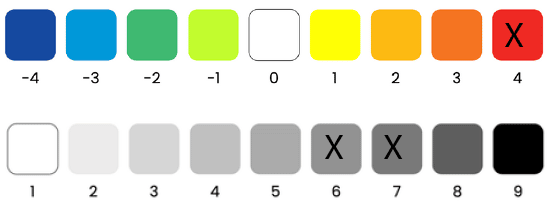EU Reach Regulation for Inks
EU REACH Regulation: what has changed
It has now been almost a year since, in January 2022, the new EU REACH regulation changed the way of producing tattoo and permanent makeup inks.
But what has really changed?
In fact, over 4,000 chemicals previously used in inks have been banned. As of 4 January 2022, many ingredients such as some preservatives, alcohols and derivatives can no longer be used in the EU.
For example, the restriction concerns chemicals that cause cancer or genetic mutations, those toxic to reproduction as well as sensitizing and skin irritating substances. The goal is not to ban the practice of tattooing but to make the colors used safer.
Thanks to the restriction we will have a reduction in chronic allergic reactions and other inflammatory skin reactions due to tattoo inks and permanent make-up. They could also decrease more serious effects such as tumors or damage to DNA or the reproductive system potentially caused by the chemicals used in the inks.
At the level of use and sale, the amendment to the legislation of the EU regulation is valid only on the European market. For this reason, European micro-pigmentists had to change all their colours.
Conversely, artists operating in the US and Canada do not follow the new REACH regulation, as are retailers distributing in the same countries.
Instead, the changes are likely to come to Britain very soon.
What the EU Reach regulation requires?
According to the amendment of Annex XVII, each batch produced of each individual color is tested and documented. The tests must show that they comply with the permitted limits such as for heavy metals and other ingredients.
Authorized laboratories have to perform all tests and the manufacturer signs all documents. Therefore competent authorities analize them. This means that even if a certain pigment is not banned but the production process is not “clean” enough, the product cannot be on the market.
Under the EU REACH regulation, there are clear rules for the labeling of ink and pigment packaging. Each pigment must describe exactly the components to ensure compliance with the REACH regulation. Therefore, blends must mention the type of use along with the ingredients list and safety statements. Finally, each description must be written in all the languages of the European community.
Manufacturers and the EU REACH Regulation
Do all manufacturing companies have REACH compliant products today?
Even though a year has now passed, not all companies have complied and there are still many non-compliant products on the market.
Unfortunately, during this year, there have been many delays in production due to the pandemic and the scarcity and difficulty of finding some raw materials. Finally, many sellers have had hard time to throw away old colors that are not up to standard. Of course, this is because of high costs for them. The artists therefore found themselves in a very chaotic situation, which still continues.
Short FAQ guide to pigments and EU REACH regulation
How do I know that the pigment line I use follows the REACH regulation?
Buy pigments only from reputable manufacturers who can provide you with documentation. Check the Material Safety Data Sheet “MSDS” and safety test reports.
How do I know if the ingredient used in my ink is prohibited by the EU REACH regulation?
Look for the ingredient lists on the packaging on the MSDS. Everything must be written in your European language. First, each color ingredient is usually identified by an CI number. For example, you can find the color “Yellow 14” as “CI-21095” in the ingredient list of your pigment. Finally a simple internet search will tell you if the pigment is banned or restricted under EU/UK REACH.
Can I still continue to use the colors I had or do not have ingredient descriptions?
From 4 January the colors will no longer be compliant and therefore can no longer be used. They risk serious sanctions, not only the producers but also the end users.
What are the qualities of the new REACH colors?
Generally these are hybrid pigments, i.e. a mix of organic and inorganic pigments. We are talking about excellent products that are even safer than in the past. In terms of durability, being a “cleaner” colour, it lasts less and needs more retouching. Formulas are often more liquid than in the past.




